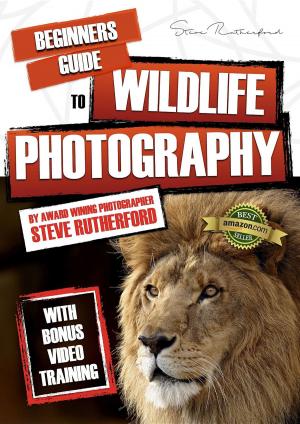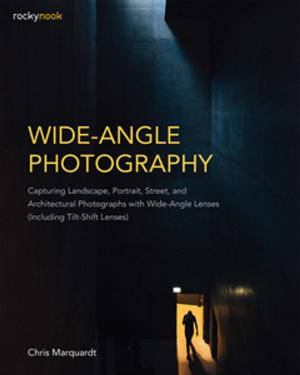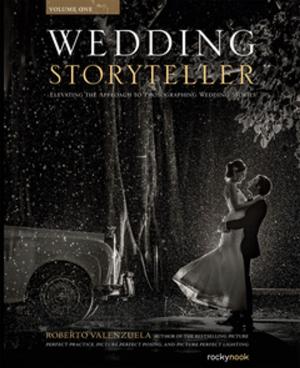The Safari Photographer: A Practical Guide For The Amateur Photographer On An African Safari Vacation
Nonfiction, Art & Architecture, Photography, Pictorials, Travel, Equipment & Techniques, Techniques| Author: | Gary Koop | ISBN: | 9780989533805 |
| Publisher: | Gary Koop | Publication: | June 4, 2013 |
| Imprint: | Smashwords Edition | Language: | English |
| Author: | Gary Koop |
| ISBN: | 9780989533805 |
| Publisher: | Gary Koop |
| Publication: | June 4, 2013 |
| Imprint: | Smashwords Edition |
| Language: | English |
The Safari Photographer is the book tourists who are planning an African photo safari vacation should read prior to their departure. It is written specifically for the amateur photographer whose goal is to take high quality photographs using a Single Lens Reflex (SLR) camera on what will probably be the trip of a lifetime. Here, the term "quality photographs" is defined as shots you would be proud to share with your family and friends, or have printed in enlarged format and mounted on the wall of your home or office. The Safari Photographer offers practical solutions to many of the problems which will be encountered in achieving this goal.
Shooting quality photos on a typical tourist African safari is extremely challenging. It is much more difficult than (say) taking photos of buildings or monuments on a trip to a major European city. The problems begin with the Land Rover type vehicles that will be the primary mode of transportation over very rough terrain while on game drives. For most safari tour groups, these vehicles will typically be shared with five or so other people. Thus, not only will people constantly be getting in each other's way, but movement and jostling inside the vehicle will lead to blurring and other image degradation. This problem will be exacerbated by the fact that almost all the shots of interest will be taken using a long telephoto lens which acts to amplify the effects of camera motion. Also, for reasons of safety, tourists are almost never allowed to get out of the vehicle while on a game drive. Thus, use of tripods and other similar camera stabilization techniques become impractical, and virtually all shots will be taken using a hand-held camera. Added to this are the difficulties associated with trying to shoot quality photos in a hot, dusty, and sometimes rainy environment under varying lighting conditions. With all of this going on, one can readily appreciate the challenges an amateur photographer faces.
The Safari Photographer addresses all of these issues, and provides practical solutions in clear, concise, and often humorous language. The book begins with an in-depth description of the photographic environment the typical tourist will experience, followed by a discussion of what SLR camera functions are most suitable for taking quality photos under these conditions. Detailed descriptions of key camera and autofocus settings are provided that will yield the best photographic results. This leads into a section discussing what SLR camera operations should be practiced ahead of time, prior to departing on the trip. Being able to make camera adjustments quickly is very important in the dynamic environment of a game drive where the scene and lighting conditions can change rapidly. Discussion is also presented on how to assess the quality of photos that have already taken. In this manner problems can be corrected immediately before the scene changes, as opposed to simply discovering a series of bad photos later when you get home. Finally, guidance is provided on what photographic equipment is most essential on an African safari and (perhaps more importantly) what things should be left at home.
This Safari Photographer documents many of the practical lessons learned by the author as well as a number of other experienced safari travelers. It will prove to be one of the most valuable resources the amateur photographer will have in achieving the goal of taking high quality photographs while on an African safari tourist vacation.
The Safari Photographer is the book tourists who are planning an African photo safari vacation should read prior to their departure. It is written specifically for the amateur photographer whose goal is to take high quality photographs using a Single Lens Reflex (SLR) camera on what will probably be the trip of a lifetime. Here, the term "quality photographs" is defined as shots you would be proud to share with your family and friends, or have printed in enlarged format and mounted on the wall of your home or office. The Safari Photographer offers practical solutions to many of the problems which will be encountered in achieving this goal.
Shooting quality photos on a typical tourist African safari is extremely challenging. It is much more difficult than (say) taking photos of buildings or monuments on a trip to a major European city. The problems begin with the Land Rover type vehicles that will be the primary mode of transportation over very rough terrain while on game drives. For most safari tour groups, these vehicles will typically be shared with five or so other people. Thus, not only will people constantly be getting in each other's way, but movement and jostling inside the vehicle will lead to blurring and other image degradation. This problem will be exacerbated by the fact that almost all the shots of interest will be taken using a long telephoto lens which acts to amplify the effects of camera motion. Also, for reasons of safety, tourists are almost never allowed to get out of the vehicle while on a game drive. Thus, use of tripods and other similar camera stabilization techniques become impractical, and virtually all shots will be taken using a hand-held camera. Added to this are the difficulties associated with trying to shoot quality photos in a hot, dusty, and sometimes rainy environment under varying lighting conditions. With all of this going on, one can readily appreciate the challenges an amateur photographer faces.
The Safari Photographer addresses all of these issues, and provides practical solutions in clear, concise, and often humorous language. The book begins with an in-depth description of the photographic environment the typical tourist will experience, followed by a discussion of what SLR camera functions are most suitable for taking quality photos under these conditions. Detailed descriptions of key camera and autofocus settings are provided that will yield the best photographic results. This leads into a section discussing what SLR camera operations should be practiced ahead of time, prior to departing on the trip. Being able to make camera adjustments quickly is very important in the dynamic environment of a game drive where the scene and lighting conditions can change rapidly. Discussion is also presented on how to assess the quality of photos that have already taken. In this manner problems can be corrected immediately before the scene changes, as opposed to simply discovering a series of bad photos later when you get home. Finally, guidance is provided on what photographic equipment is most essential on an African safari and (perhaps more importantly) what things should be left at home.
This Safari Photographer documents many of the practical lessons learned by the author as well as a number of other experienced safari travelers. It will prove to be one of the most valuable resources the amateur photographer will have in achieving the goal of taking high quality photographs while on an African safari tourist vacation.















